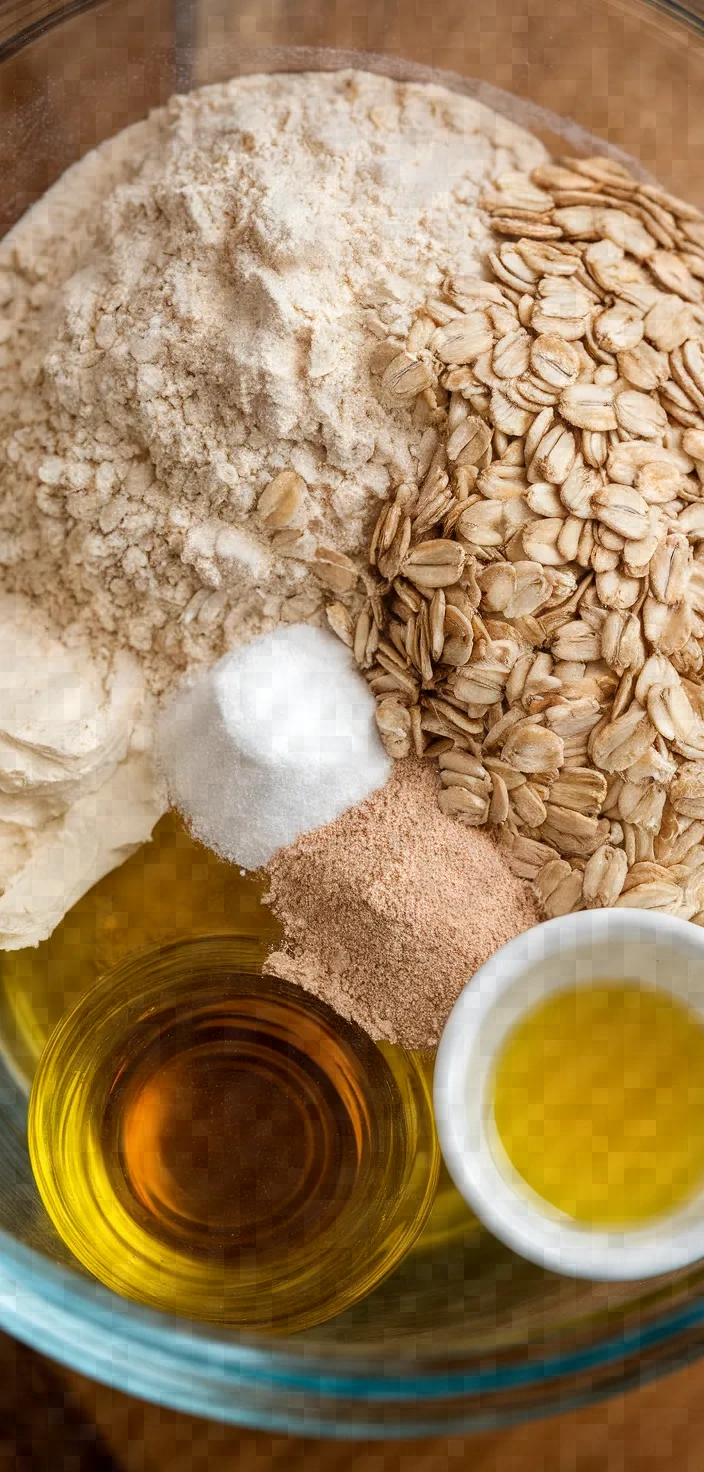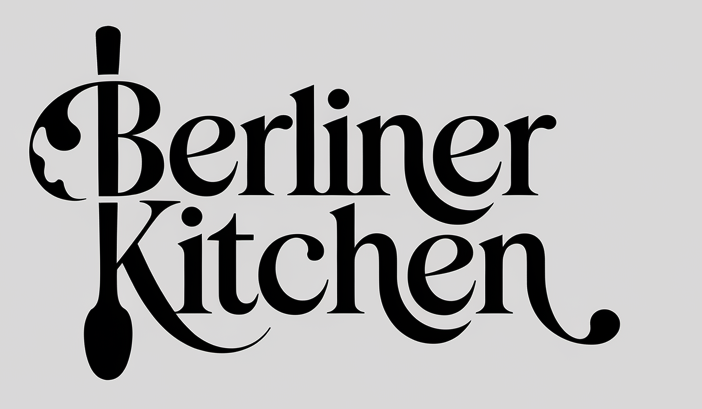This recipe brings me so much joy because it combines the ancient, nutty goodness of Einkorn flour with the heartiness of rolled oats, creating a bread that’s both nourishing and delicious. Plus, the honey and apple cider vinegar add a subtle sweetness and tang that make each slice absolutely irresistible and perfect for my avocado toast obsession!

I adore taking the nutty-flavored Einkorn flour and combining it with rolled oats to form a piping-hot, freshly baked bread that is (1) as solid as (2) a brick, (3) rich in fiber, and (4) replete with all kinds of good (5) nutrients. This classic East African recipe uses (6) 10 grams of active dry yeast to ensure a real rise in (7) the hearty loaf; (8) honey and olive oil serve as sweetening and moistening agents, (9) respectively, and (10) about half of the (11) apple cider vinegar makes this Tochalia sing with bread-like flavor.
Ingredients

Einkorn flour:
Grain from ancient times that is rich in nutrients has a nutty flavor and is high in protein.
Rolled oats:
An exceptional source of fiber, good for the heart, with a chewy texture.
Active dry yeast:
Agent leavening, helps dough rise, enhances structure airy bread.
Honey:
Natural sweetener, adds moisture and a slight sweetness.
Olive oil:
Adds richness and tenderness to bread.
Healthy fat.
Apple cider vinegar:
Boosts taste, interacts with yeast for improved leavening.
Ingredient Quantities
- 300g Einkorn flour
- 100g rolled oats
- 10g active dry yeast
- 1 teaspoon salt
- 350ml warm water
- 2 tablespoons honey
- 2 tablespoons olive oil
- 1 tablespoon apple cider vinegar
- Optional: seeds or nuts for topping
Instructions
1. In a spacious bowl, blend the Einkorn flour, rolled oats, and salt until fully incorporated.
2. In another bowl, mix the warm water with the active dry yeast and honey. Allow it to sit for about 5 minutes until the yeast is activated and foamy.
3. Combine the olive oil and apple cider vinegar with the yeast mixture and stir gently.
4. Combine the wet ingredients with the dry ingredients in a large bowl. Mix with a spoon or spatula until the dough holds together and is too stiff to mix with a spoon or spatula. At this point, it is best to continue mixing with your hands until a soft, shaggy dough is achieved.
5. Knead the dough in the bowl or on a lightly floured surface for about 5 minutes, until smooth, Einkorn dough is typically stickier than regular dough, so resist the urge to add extra flour.
6. Place a warmed, damp cloth or plastic wrap over the bowl and allow the dough to rise in a warm area for about 1 to
1.5 hours, or until it has roughly doubled in size.
7. Set your oven to 375°F (190°C) and give a bread loaf pan a light greasing.
8. After the dough has risen, gently punching it down releases excess air. The dough is shaped into a loaf and placed in the prepared pan. Seeds or nuts, if desired, can be sprinkled on top.
9. Allow the dough to rise a second time in the loaf pan for approximately 30 minutes.
10. In the preheated oven, bake for 30-35 minutes, or until the loaves are golden brown and sound hollow when tapped. Allow cooling on a wire rack before slicing and serving.
Equipment Needed
1. Large mixing bowl
2. Medium mixing bowl
3. Measuring cups and spoons
4. Wooden spoon or spatula
5. Clean cloth or plastic wrap
6. Loaf pan
7. Pastry brush (for greasing the pan)
8. Oven
9. Wire rack
FAQ
- Can I substitute Einkorn flour with another type of flour?Indeed, you can replace Einkorn flour with either whole wheat flour or spelt flour, but the texture and flavor may vary somewhat.
- Is it possible to make this bread gluten-free?Einkorn contains gluten, so to make a gluten-free version, you would need to use a gluten-free flour blend and adjust the liquids.
- How long does the dough need to rise?Let the dough swell in an untended, warm, and wind-free place for about 1 to 1.5 hours, or until it has doubled in size.
- Can I add extra ingredients like seeds or nuts?Certainly! Adding either seeds or nuts, whether on top of the dough or mixed into it, can intensify the flavor and texture.
- What kind of oats should I use?This recipe calls for rolled oats, but you can try using quick oats for a somewhat different texture.
- How should the bread be stored?An airtight container or a bread box keeps baked bread fresh. For preservation spans longer than that, freezing works.
- Can I use instant yeast instead of active dry yeast?Certainly, instant yeast can be used. The amount can be reduced to about 8g, and there is no requirement to first dissolve it in water.
Substitutions and Variations
Einkorn flour:
Whole wheat flour or spelt flour can be used as a substitute in a 1:1 ratio.
Rolled oats:
If necessary, use quick oats or oat flour, but keep in mind that the texture will be different.
Active dry yeast:
You may use instant yeast, but cut the amount down to 8g.
Honey:
Good substitutes, in equal measurements, for corn syrup include maple syrup or agave syrup.
Olive oil:
Substitute melted coconut oil or vegetable oil for comparable moisture.
Pro Tips
1. Proper Activation of Yeast: Ensure the water used to activate the yeast is warm but not hot, around 105-110°F (40-43°C) is ideal. Too hot, and it could kill the yeast, too cool, and the yeast may not activate fully.
2. Optimal Consistency: Einkorn flour has a different gluten structure from regular wheat, making the dough stickier and more challenging to work with. It’s crucial to avoid adding extra flour while kneading, embracing the slightly sticky texture for a successful rise and soft crumb.
3. Ideal Rise Environment: To create a consistently warm environment for rising, place the bowl in an oven with just the light turned on, or set it near a radiator. Consistent warmth helps the dough rise more uniformly.
4. Customize with Toppings: Experiment with different seeds or nuts for the topping, such as sunflower seeds, pumpkin seeds, or chopped walnuts, to add extra flavor and texture. Toasting seeds or nuts beforehand can intensify their flavor.
5. Check for Doneness: Besides the hollow sound test, use a thermometer to check doneness. A fully baked loaf should read at least 190°F (88°C) in the center. This ensures the bread is fully baked and prevents a soggy or undercooked interior.

German Einkorn Oat Bread Recipe
My favorite German Einkorn Oat Bread Recipe
Equipment Needed:
1. Large mixing bowl
2. Medium mixing bowl
3. Measuring cups and spoons
4. Wooden spoon or spatula
5. Clean cloth or plastic wrap
6. Loaf pan
7. Pastry brush (for greasing the pan)
8. Oven
9. Wire rack
Ingredients:
- 300g Einkorn flour
- 100g rolled oats
- 10g active dry yeast
- 1 teaspoon salt
- 350ml warm water
- 2 tablespoons honey
- 2 tablespoons olive oil
- 1 tablespoon apple cider vinegar
- Optional: seeds or nuts for topping
Instructions:
1. In a spacious bowl, blend the Einkorn flour, rolled oats, and salt until fully incorporated.
2. In another bowl, mix the warm water with the active dry yeast and honey. Allow it to sit for about 5 minutes until the yeast is activated and foamy.
3. Combine the olive oil and apple cider vinegar with the yeast mixture and stir gently.
4. Combine the wet ingredients with the dry ingredients in a large bowl. Mix with a spoon or spatula until the dough holds together and is too stiff to mix with a spoon or spatula. At this point, it is best to continue mixing with your hands until a soft, shaggy dough is achieved.
5. Knead the dough in the bowl or on a lightly floured surface for about 5 minutes, until smooth, Einkorn dough is typically stickier than regular dough, so resist the urge to add extra flour.
6. Place a warmed, damp cloth or plastic wrap over the bowl and allow the dough to rise in a warm area for about 1 to
1.5 hours, or until it has roughly doubled in size.
7. Set your oven to 375°F (190°C) and give a bread loaf pan a light greasing.
8. After the dough has risen, gently punching it down releases excess air. The dough is shaped into a loaf and placed in the prepared pan. Seeds or nuts, if desired, can be sprinkled on top.
9. Allow the dough to rise a second time in the loaf pan for approximately 30 minutes.
10. In the preheated oven, bake for 30-35 minutes, or until the loaves are golden brown and sound hollow when tapped. Allow cooling on a wire rack before slicing and serving.
